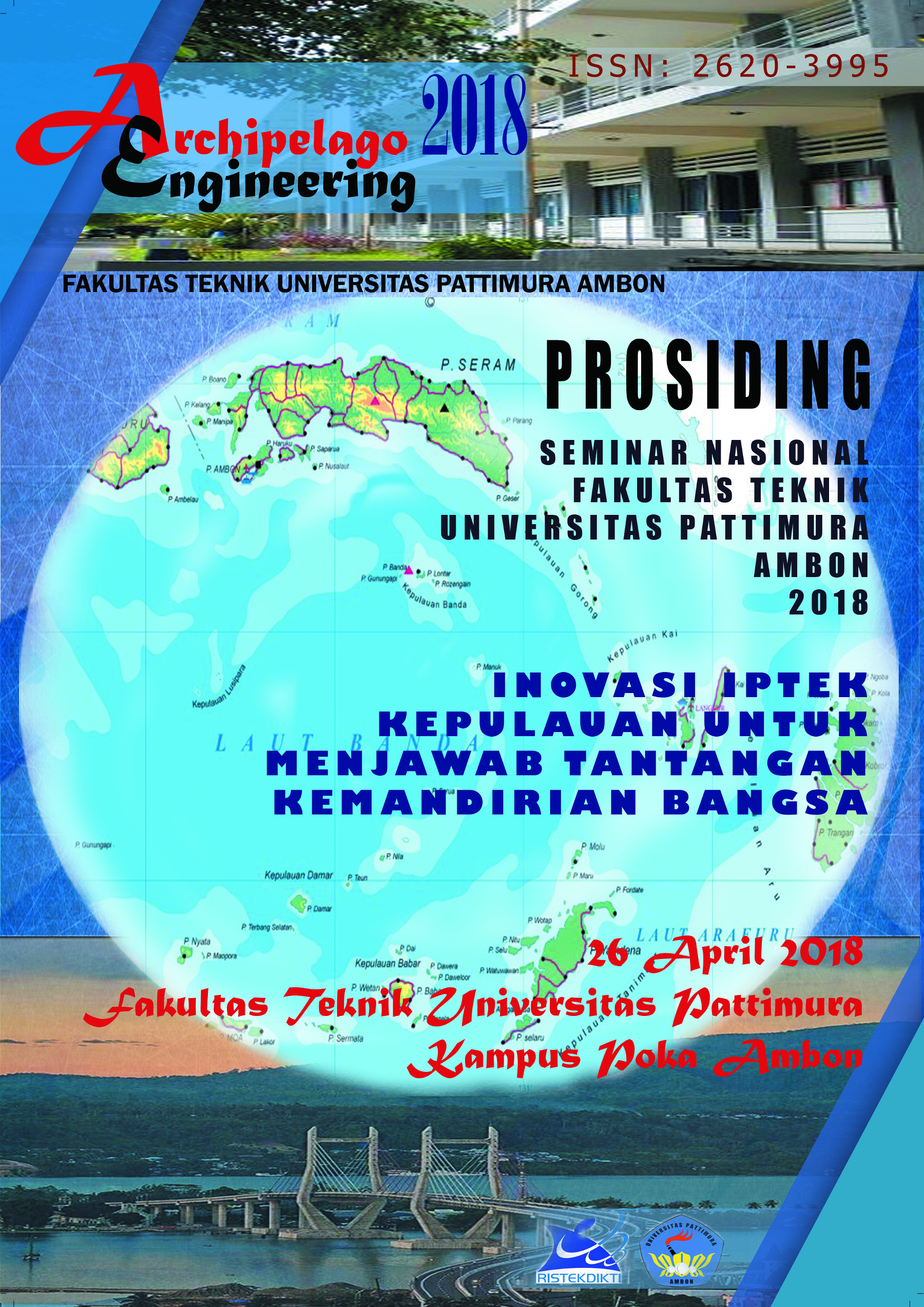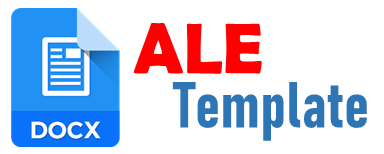STUDI KORELASI HAMBATAN DAN SEAKEEPING KAPAL TRIMARAN UNTUK DAERAH PERAIRAN MALUKU
Abstract
Perairan Maluku termasuk tipikal perairan yang relatif tenang diantara pulau-pulau yang berdekatan dan sangat bergelombang untuk laut yang terbuka dan jarak antara pula-pulau yang cukup berjauhan. Penelitian difokuskan pada perhitungan hambatan dan dilanjutkan dengan perhitungan seakeeping untuk perairan tenang dan bergelombang. Penelitian tentang hambatan dilakukan dengan teknik CFD menggunakan CFX-code dan penelitian tentang seakeeping dilakukan dengan teknik CFD (ANSYS AQWA).Hasil kajian melalui numerik menunjukkan bahwa interferensi komponen hambatan pada lambung trimaran terhadap perubahan jarak antara lambung secara melintang (S/L). Semakin kecil jarak antara lambung trimaran (S/L) maka semakin besar hambatan dan interferensi/interaksi komponen hambatan yang terjadi. Kemudian korelasi yang terlihat antara hambatan dan seakeeping adalah adanya perbedaan karena adanya interferensi semakin besar interferensi maka gerakan heave dan pitch semakin berkurang. Namun inteferensi tidak mempengaruhi terhadap gerakan roll. Hasil analisa pengujian dan numerik menunjukkan bahwa pada S/L=0,4 menunjukkan hasil yang sangat baik untuk permorma hambatan dan seakeeping. Hasil yang diperolehdibandingkandenganpublished datadanmenunjukkankesesuaianhasil yang cukupbaik. Hasil penelitian ini diharapkan dapat memperkaya dan memperkuat database dalam mempresentasikan korelasi hambatan terhadap olah gerak pada lambung kapal trimaran dan selanjutnya dapat diaplikasikan secara langsung dalam perhitungan hambatan dan seakeeping yang digunakan pada tahap desain (preliminary design).
Downloads
References
ANSY CFX Manual VII, ANSYS 2015.
Baba, E. 1996 A new component of viscous
resistance of ships, Journal of the Society. of
Naval Architects of Japan, 125, 23-34.
Bhattacharyya, Rameswar (1978). Dynamics of
Marine Vehicles. John Wiley and Sons.
USA.
Couser, P R, Molland, A F, Armstrong N and
Utama, I K A P (1997), “CalmWater
Powering Predictions for High Speed
Catamaransâ€, Procs. OfInternational
Conference on Fast Sea Transportation,
FAST 1997,Sydney, 21-23 July.
Couser, P R, Wellicome, J.F., Molland, A F.
(1998), “An Improve Method for
theTheoretical Prediction of the Wave
Resistance of Transom-Stern HullsUsing A
Slender Body Approachâ€, International
Shipbuilding Progress,Vol. 45, No. 444.
Hughes, G (1954), “Friction and Form Resistance
in Turbulent Flow and a Proposed
Formulation for Use in Model and Ship
Correlationâ€, Trans INA, Vol. 96.
Insel, M dan Molland, A F (1992), “An
Investigation into the Resistance Components
of High Speed Displacement Catamaransâ€,
Trans RINA Vol. 134.
ITTC (2002), Recommended Procedures and
Guidelines, Testing and Extrapolation
Methodsin Resistance Towing Tank Tests,
ITTC 7,5-02-02-02.
Kurultay, A.A.: 2003. Sensitivity analysis of the
seakeeping behavior of trimaran ships. MSc
Thesis, Naval Postgraduate School,
Monterey, California (USA) (2003).
Liu, C. Y. & Wang, C. T. (1979). Interference
effect of catamaran planing hulls. J.
Hydronautics, 13(1), Jan, 31-32.
Luhulima, R. B, Utama, I.K.A.P, Utama,
Sulisetyono A., CFD Analysis into the
Resistance Interference of Displacement
Trimaran. Australian Journal of Basic and
Applied Sciences, 10(14) September 2016,
Pages: 65-73, (2016)
Luhulima R.B, Utama, I.K.A.P. Selecting Mono-
And Multi-Hull Passenger Vessels For
Moluccas Waters: Resistance/Powering And
Seakeeping Evaluation. The 13th
International Conference on QiR, 25-28 June
2013. Jogjakarta. Indonesia (2013).
Luhulima, R.B. Studi Karakteristik Hambatan
Dan Seakeeping Kapal Trimaran Pada
Perairan Tenang Dan Bergelombang. Buku
Disertasi-S3 Teknik Perkapalan, Fakultas
Teknologi Kelautan ITS.Surabaya.2016
Menter, F.R. (1993), “Zonal Two Equation k- ω
Turbulence Models for Flowsâ€, AIAA Paper
93 – 2906.
Miyazawa, M. (1979), “A Study on the Flow
Around a Catamaranâ€, Journal of Society of
Naval Architects of Japan, No. 145, pp. 49 -
56.
Molland, A.F., Utama, I K A P., and Buckland, D.
(2000), “Power Estimation for High Speed
Displacement Catamaransâ€, The second
Regional Conference on Marine Technology
for Sustainable Development in an
Archipelago Environment, Proc.
MARTEC’2000, Surabaya, Indonesia, 7- 8
September 2000.
Pien, P C (1976), Catamaran Hull-Form Design,
Proceedings of the International
Seminar on Wave Resistance, the Society of
Naval Architects of Japan
(SNAJ).
Seif, M.S. dan Amini, E. (2004), Performance
Comparison Between Planing Monohull and
Catamaran at High Froude Numbers, Iranian
Journal of Science & Technology,
Transaction B, Vol. 28 No. B4.
Turner, H. dan Taplin, A. (1968), The Resistance
of Large Powered Catamaran,
Trans. SNAME, Vol. 76.
Utama, I K A P (1999), Investigation of the
Viscous Resistance Components of
Catamaran Forms, PhD Thesis, Department
of Ship Science, University of Southampton,
UK.
Utama, I K A P, Murdijanto dan Hairul (2008),
An Investigation into the Resistance
Characteristics of Staggered and Unstaggered
Catamaran, RIVET, Kuala
Lumpur – Malaysia, 15-17 Juli 2008
Zouridakis, F. (2005), A Preliminary Design
Tools for Resistance and Powering
Prediction of Catamaran Vessels, Master of
Science Thesis in Ocean Systems
Management, Dept. of Ocean Engineering,
Massachusetts Institute of Technology.
An author who publishes in the ALE Proceeding agrees to the following terms:
- Author retains the copyright and grants ALE Proceeding the right of first publication of the work simultaneously licensed under the Creative Commons Attribution-ShareAlike 4.0 License that allows others to share the work with an acknowledgment of the work's authorship and initial publication in this journal.
- Author is able to enter into separate, additional contractual arrangements for the non-exclusive distribution of the journal's published version of the work (e.g., post it to an institutional repository or publish it in a book) with the acknowledgment of its initial publication in this journal.
- Author is permitted and encouraged to post his/her work online (e.g., in institutional repositories or on their website) prior to and during the submission process, as it can lead to productive exchanges, as well as earlier and greater citation of the published work (See The Effect of Open Access).
Read more about the Creative Commons Attribution-ShareAlike 4.0 Licence here: https://creativecommons.org/licenses/by-sa/4.0/.






